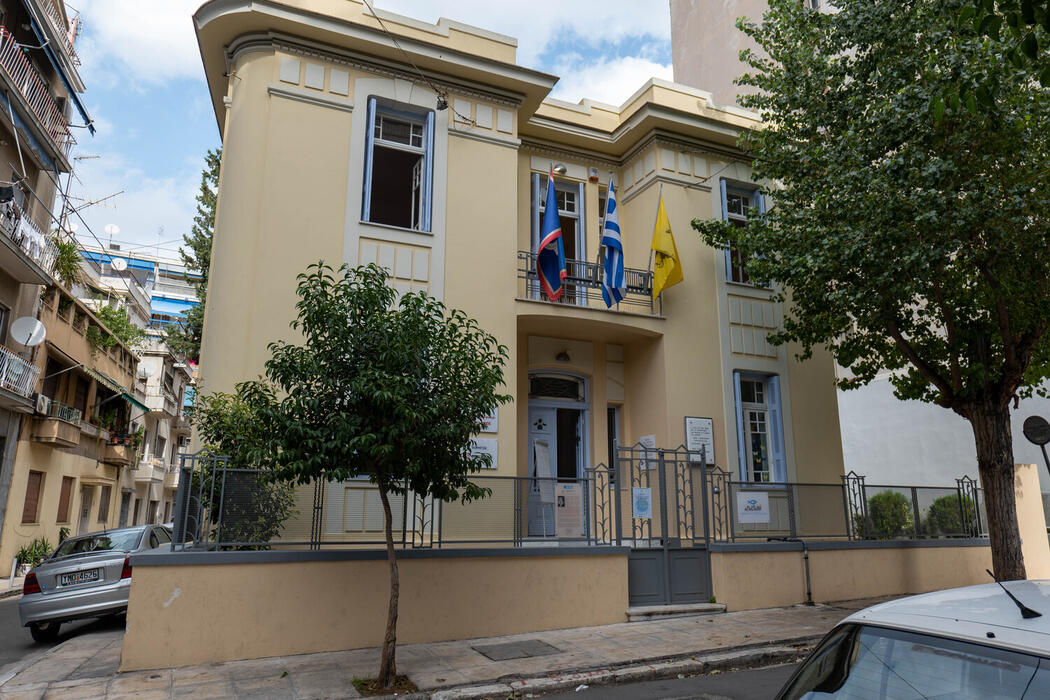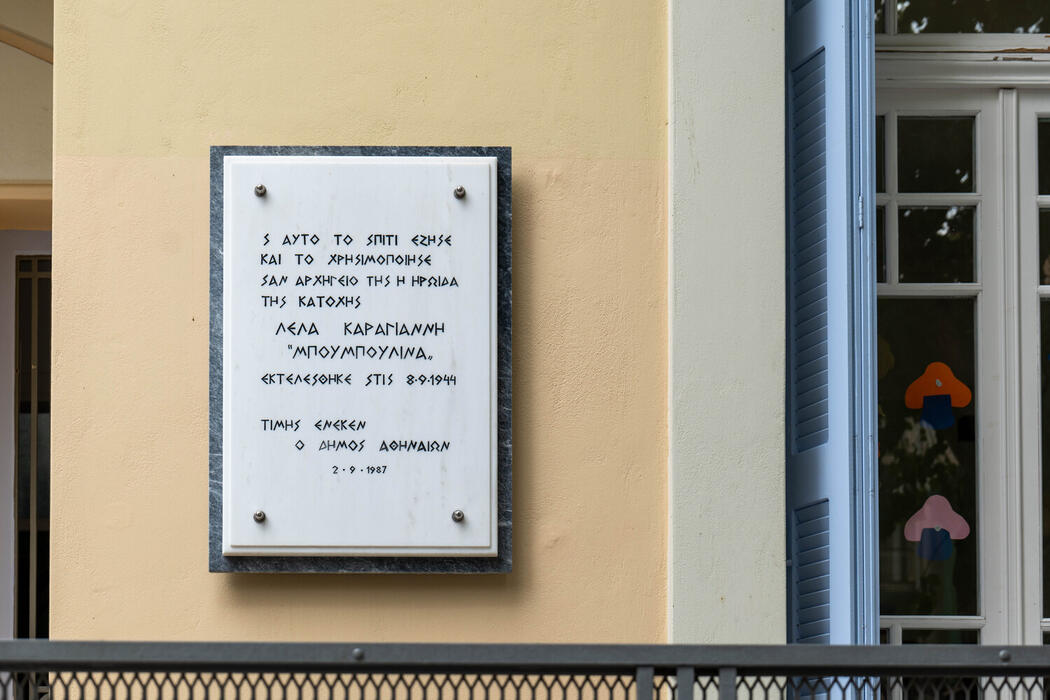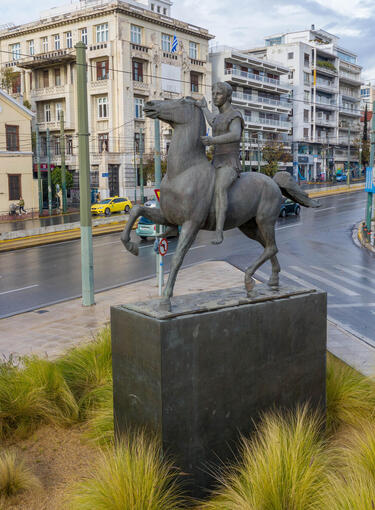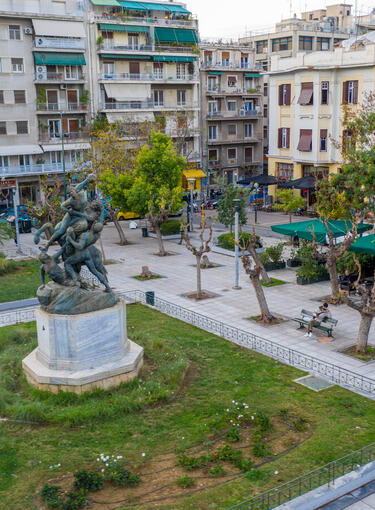This is the house where Lela Karagianni (1898-1944) lived, an important female figure in modern Greek history and one of the most important Greek resistance fighters. When the occupation began (1941-1944), Karagianni was transformed from a housewife to a determined freedom fighter. She founded and financed the resistance organisation “Bouboulina”, a name that belonged to the great heroine of the Greek War of Independence and Karagianni’s own great-grandmother, and set her house up as headquarters. The aim of the organisation was mainly to help British nationals escape to Egypt, but its members also engaged in acts of sabotage against the Germans and also created an espionage network that gathered information and passed it on to other members of the National Resistance and to the Allies. The organisation’s action was reported to the authorities and the brave resistance fighter was arrested, along with five of her children, and brutally tortured in the Merlin Street detention centre. From there, she was transferred to the Haidari concentration camp, where she was executed, along with fifty-nine other resistance fighters, just one month before the Liberation. The house of the Karagiannis family served as the headquarters of the “Bouboulina” organisation in which sabotage against the conquerors was organised. Today, it belongs to the municipality of Athens and has been declared a historical monument since 1995. A marble inscription has been placed on the front of the house, which reads “This is the house where the heroine of the Occupation Lela Karagianni, ‘Bouboulina’, lived and used as her headquarters. She was executed on 8.9.1944. In her honour, the Municipality of Athens, 8-9-1987. It is worth noting that the street on which the building is located has been renamed “Lelas Karagianni”, in honour of the great resistance fighter.
Main Bibliography
- Bury John – Meiggs Russell, A History of Greece. To the Death of Alexander the Great, Translated by Rouli Tataki, K. N. Petropoulos, Anna Papadimitriou - Grammenou, Konstantinos Buraselis, Angelos Matthaiou, Athens 2011.
- Αλεξάνδρου, μτφρ. Ρούλη Τατάκη, Κ. Ν. Πετρόπουλος, Άννα Παπαδημητρίου Γραμμένου,
- Κωνσταντίνος Μπουραζέλης, Άγγελος Ματθαίου, Αθήνα 2011.
- Lefèvre François, Histoire Du Monde Grec Antique, Translated by Anastasia Kefala, Mina Kardamitsa, Athens 2016.
- Καρδαμίτσα, Αθήνα 2016.
- Antonopoulou Zeta, Τα Γλυπτά της Αθήνας: Υπαίθρια Γλυπτική 1834-2004, Athens 2003.
- Karaiskou Vicky, Νεοελληνική Γλυπτική: Ματιές και αναγνώσεις, Athens 2011.
- Pavlopoulos Dimitris, Ζητήματα Νεοελληνικής Γλυπτικής, Athens 1998.
- Γλυπτά, Αθήνα 2020.
- Pavlopoulos Dimitris, Από τον Ιερό Λόχο στον Κωνσταντίνο ΙΒ’: Νεότερα Αθηναϊκά Γλυπτά, Athens 2020.
Main Webliography
http://www.athenssculptures.com
https://explore.cure-project.gr
https://www.thisiscrete.gr/gr/historical-monuments
https://www.wikipedia.org
Informations
Additional
Date: 1923
Location: Junction of 1 Lelas Karagianni and Stavropoulou Str., Kypseli
Type: Historic Residence
Subject: World War II, German Occupation
Access: Outdoor spaces accessible all 24 hours
Accessible to people with disabilities











